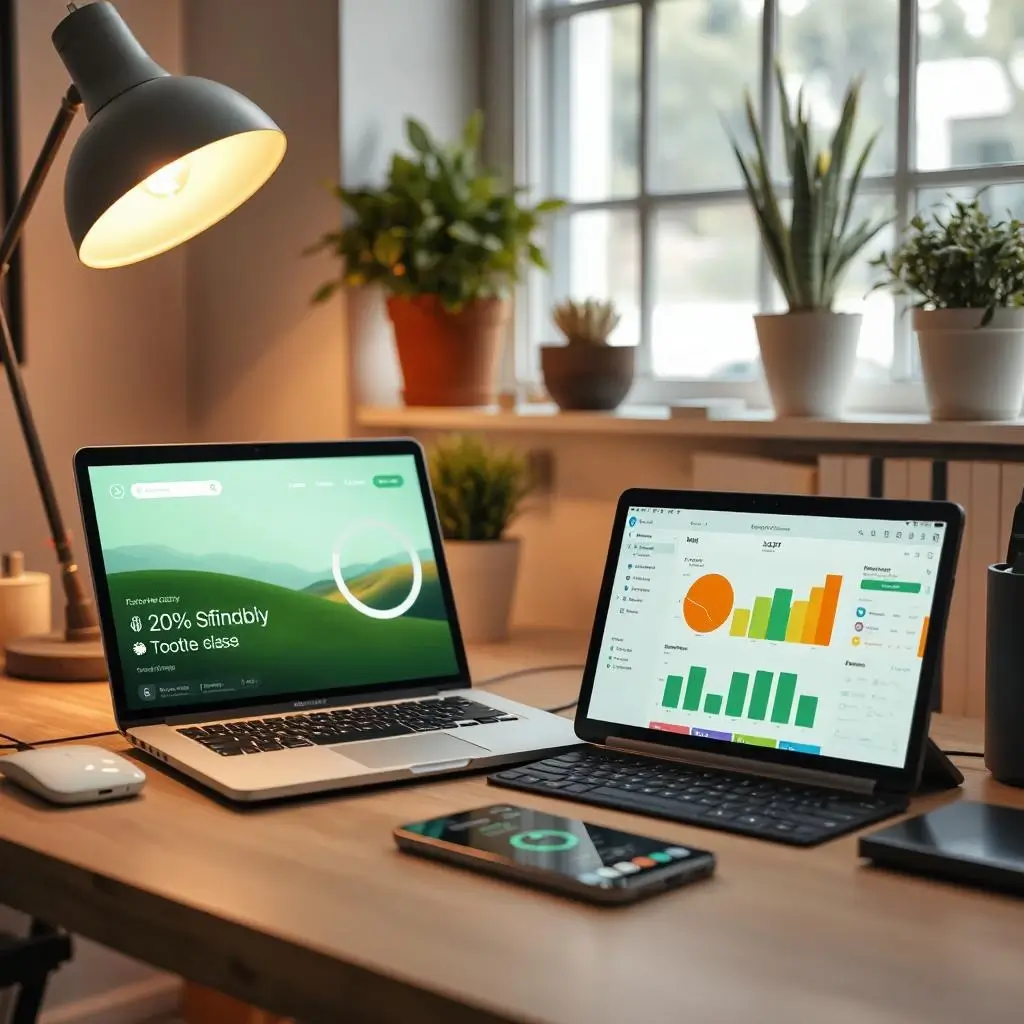1. Introduction
- Reducing your carbon footprint isn’t just about changing physical habits—it extends to the digital world as well. The internet, cloud storage, and online activities consume a significant amount of energy. From streaming videos to sending emails, each action leaves an environmental impact. This article explores simple yet effective ways to minimize your digital carbon footprint while maintaining an efficient online experience.
2. Understanding Digital Carbon Footprint
Definition: A digital carbon footprint refers to the energy consumption and CO2 emissions generated by online activities.
Data Centers Impact: Cloud storage and data processing centers require massive electricity to function.
Streaming and Browsing Energy Use: Watching videos, browsing websites, and downloading files all contribute to energy consumption.
Device Manufacturing and Disposal: The production and disposal of digital devices create environmental waste.
Growing Internet Usage: With the rise in global digital consumption, the need for sustainable online practices is more crucial than ever.
3. Use Energy-Efficient Devices
Choose Energy Star-Certified Devices: These consume less power and reduce waste.
Enable Power-Saving Mode: Helps in lowering energy use on laptops, tablets, and smartphones.
Unplug Chargers and Devices: Avoid standby energy drain when gadgets are not in use.
Opt for Refurbished Electronics: Extends the life of tech products and reduces electronic waste.
Recycle Old Devices Properly: Dispose of e-waste responsibly through certified recycling programs.
4. Reduce Video Streaming Energy Consumption
Lower Streaming Resolution: HD and 4K videos require more energy.
Download Instead of Streaming: Saves bandwidth and reduces repeated data transmission.
Use Wi-Fi Over Mobile Data: Cellular networks consume more energy than Wi-Fi connections.
Limit Background Autoplay: Turn off auto-play settings on social media and streaming platforms.
Prefer Sustainable Streaming Platforms: Some companies invest in renewable energy for their data centers.
5. Optimize Cloud Storage and Email Usage
Delete Unnecessary Emails: Data centers store emails, consuming energy.
Unsubscribe from Unwanted Newsletters: Reduces data transmission and email clutter.
Use Local Storage Over Cloud: Minimizes cloud service energy usage.
Regularly Clean Cloud Backups: Remove duplicate and outdated files.
Choose Green Cloud Providers: Some companies operate using renewable energy sources.
6. Practice Sustainable Web Browsing
Use Energy-Efficient Browsers: Some browsers consume less power and load pages faster.
Block Unnecessary Ads: Reduces data usage and page load time.
Use Dark Mode on Devices: Saves energy on OLED and AMOLED screens.
Bookmark Frequent Websites: Minimizes repeated searches, saving energy.
Support Eco-Friendly Websites: Some platforms optimize their energy consumption and server efficiency.
7. Reduce Social Media and App Usage
Limit Video-Based Social Media Consumption: Short video content platforms require high bandwidth.
Disable Auto-Sync and Background Data: Prevents apps from using data unnecessarily.
Turn Off Push Notifications: Reduces data retrieval requests from servers.
Use Lighter Versions of Apps: Many platforms offer energy-efficient versions of their apps.
Schedule Social Media Usage: Reduces the constant need for refreshing feeds and consuming data.
8. Green Coding and Web Design for Businesses
Optimize Website Performance: Fast-loading sites use fewer server resources.
Use Efficient Coding Practices: Minimizes processing power and reduces server strain.
Host Websites on Green Servers: Choose web hosts that use renewable energy.
Reduce Image and Video Sizes: Compress media files to lower bandwidth use.
Encourage Sustainable User Behavior: Promote eco-friendly browsing habits.
9. Digital Work and Online Meetings
Turn Off Video in Virtual Meetings When Not Needed: Saves energy usage.
Use Energy-Efficient Video Conferencing Tools: Some platforms have lower carbon emissions.
Minimize Unnecessary Email Chains: Reduces data storage and transmission.
Enable Sleep Mode on Computers: Reduces idle energy consumption.
Encourage Remote Work for Reduced Commuting: Lowers carbon footprint from transportation.
10. E-Commerce and Online Shopping Impact
Choose Sustainable Online Retailers: Support brands that focus on sustainability.
Limit Fast Shipping Options: Overnight deliveries require more energy.
Consolidate Orders to Reduce Packaging Waste: Bulk purchasing minimizes carbon impact.
Prefer Digital Products Over Physical: Reduces material waste and shipping emissions.
Recycle and Dispose of E-Commerce Packaging Responsibly: Supports waste reduction efforts.
11. Switch to Renewable Energy for Internet Usage
Use Renewable-Powered ISPs: Some providers use green energy.
Opt for Smart Home Energy Management: Reduces unnecessary electricity use.
Encourage Community Solar or Wind Energy Programs: Supports cleaner power grids.
Install Solar-Powered Internet Modems and Routers: Reduces dependence on fossil fuels.
Monitor and Adjust Home Energy Consumption: Helps in tracking and optimizing energy use.
12. Comparison of Online Activities and Their Carbon Impact
| Online Activity | Carbon Footprint Estimate | Energy-Saving Alternative |
| 1 Hour of Video Streaming (HD) | 440g CO2 | Lower resolution, download content |
| 1 Email with Attachment | 50g CO2 | Compress files, use cloud links |
| 1 Google Search | 0.2g CO2 | Use bookmarks for frequent searches |
| Social Media Scrolling (1 Hour) | 50g CO2 | Limit usage, disable autoplay |
| Cloud Storage for 1GB Data | 2kg CO2 per year | Delete unnecessary files, use local storage |
13. Future of Sustainable Digital Consumption
AI and Machine Learning for Energy Optimization: Automates energy-efficient processes.
More Renewable-Powered Data Centers: Tech companies are shifting to greener solutions.
Eco-Friendly Hardware Development: Sustainable materials in device production.
Digital Carbon Footprint Trackers: Tools to measure and reduce individual energy consumption.
Public Awareness and Policy Changes: Encouraging industries to adopt sustainable practices.
14. Conclusion
Reducing your digital carbon footprint doesn’t require drastic changes—small, mindful habits can make a difference. By using energy-efficient devices, optimizing online activities, and supporting sustainable digital initiatives, individuals and businesses can contribute to a greener future. Every action counts, and a more eco-conscious digital lifestyle benefits both the planet and long-term sustainability.
Disclaimers
Carbon footprint estimates vary based on region, internet infrastructure, and device efficiency.
Energy savings depend on individual habits and service providers.
Some recommendations may require additional hardware or software investments.
The sustainability of digital services relies on continued advancements in green energy solutions.
Author: Dipika Kumari
Publication Date: 27-03-2025
Email: [email protected]
